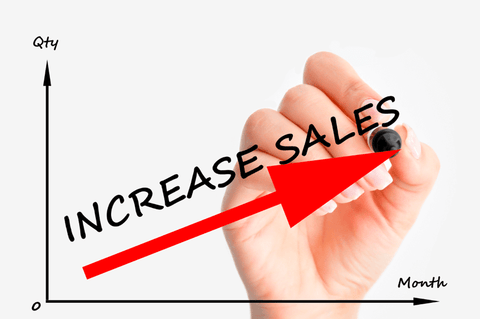
Do you want to increase your sales? Then know your audience. Psychology has been studying the buyer’s brain to understand what makes it tick. What scientists have discovered is that although people behave highly irrationally, their brains follow specific rules.
Retailers can use this knowledge to design more effective strategies, to increase sales and customer satisfaction.
Here are 10 ways you can use the inner workings of the customer's brain to your advantage.
1. Don’t offer too many alternatives
Customers think they like choice – but too many options can be paralyzing. This is what scientists call the paradox of choice. We advise retailers to limit the flavors, color and brand options in the store. If you offer too many alternatives, you may end up selling less (and will be left with a lot of stock to turn).
2. Distract and confuse shoppers
When people get interrupted during shopping they lose focus and become less price-sensitive, studies show. To increase sales, distract shoppers in-store with vocal pop-up ads, digital signage, images, and by asking them “Can I help you?”. When people return to look at products after a distraction, they are more likely to buy and spend more. For the same reason, supermarkets and malls often have counter-intuitive store plans – they are specifically designed to confuse shoppers, as that supports sales.
3. Elicit emotions – best of all, nostalgia
Emotional messages are easier to remember and more effective than rational messages. However, not all emotions are created equal. Research shows that when people are feeling nostalgic, they value moneyless, and are therefore willing to pay more for products. Leverage on this by using pictures and music in-store that get to people’s guts: families, holidays, and retro music is oft-used ploys that always do the trick.
4. Personalize.
When a product is relevant to people, they pay more attention to it. This happens primarily when we hear our name (a magic word which activates various sections of our brain), but also when we hear something we are interested in – be it a sport we are interested in, our favorite band or the name of a country we have recently visited.
professional salesmen can use their observation talent to gain ideas about customers actions. And they don’t forget to use people’s names!
5. Copying your customer body language
When talking to customers, try copying their body language and words: you will increase the chances they will buy from you. That’s because we tend to feel a stronger affinity to people we perceive similar to us. The “mirroring effect” is a very effective sales trick.
6. Let customers touch the merchandise
Customers are willing to pay more for items if they can see and touch them. The sensory experience is so important that the longer people spend looking and holding products, the more they are willing to pay for them. This is great news for stores sales team – as long as they don’t stick to “Do not touch the merchandise” attitude.
7. Create the illusion of scarcity
People value things differently depending on how common or scarce they perceive them to be. The rarer a product, service or opportunity, the more valuable it appears. Research about “why we buy,” found that stores could increase the sales of products simply by adding the sentence “maximum 10 Pieces per customer”. Customers will buy more products even if it was priced the same as the day before. The feeling of scarcity —the FOMO “fear of missing out”— triggers in shoppers a survival instinct that makes them buy more, quickly.
8. Add an expensive item to sell middle-of-the-road ones
People tend to choose products that offer a good bargain. Most customers don’t want to go for the cheapest option, but they still want to feel like they are getting good quality for the money. You can leverage this attitude to increase sales of specific items, by adding an extremely expensive alternative in the same product category. Most buyers will go for the middle-of-the-road product because it will look affordable and a good bargain compared to the higher-priced one.
9. Use the right sounds and scents
Background music in-store can influence not only how much people spend, but also what they buy. Stores playing jazz or classical music are perceived as more sophisticated – and customers stepping in are open to spending more than people entering places playing pop, or rock music. The hearing is not the only sense that affects our spending habits: researchers found that smell led to a 25% increase in sales.
10. Put popular but inexpensive items by the entrance
Drive customers to make small impulse buys, and sell more by triggering what psychologists call the “shopping mindset”. Once people have made a purchase, no matter how small, they are more likely to buy more, psychology says. Leverage on this effect by placing low-price, popular products – like candy or newspapers – by the entrance of your store.
Once you know how your audience thinks, what makes them tick, you can adjust your strategy to become more effective. Make sure that you use the right approach for your industry and target market, and that you always combine these strategies with the most effective weapon of all – amazing customer service.